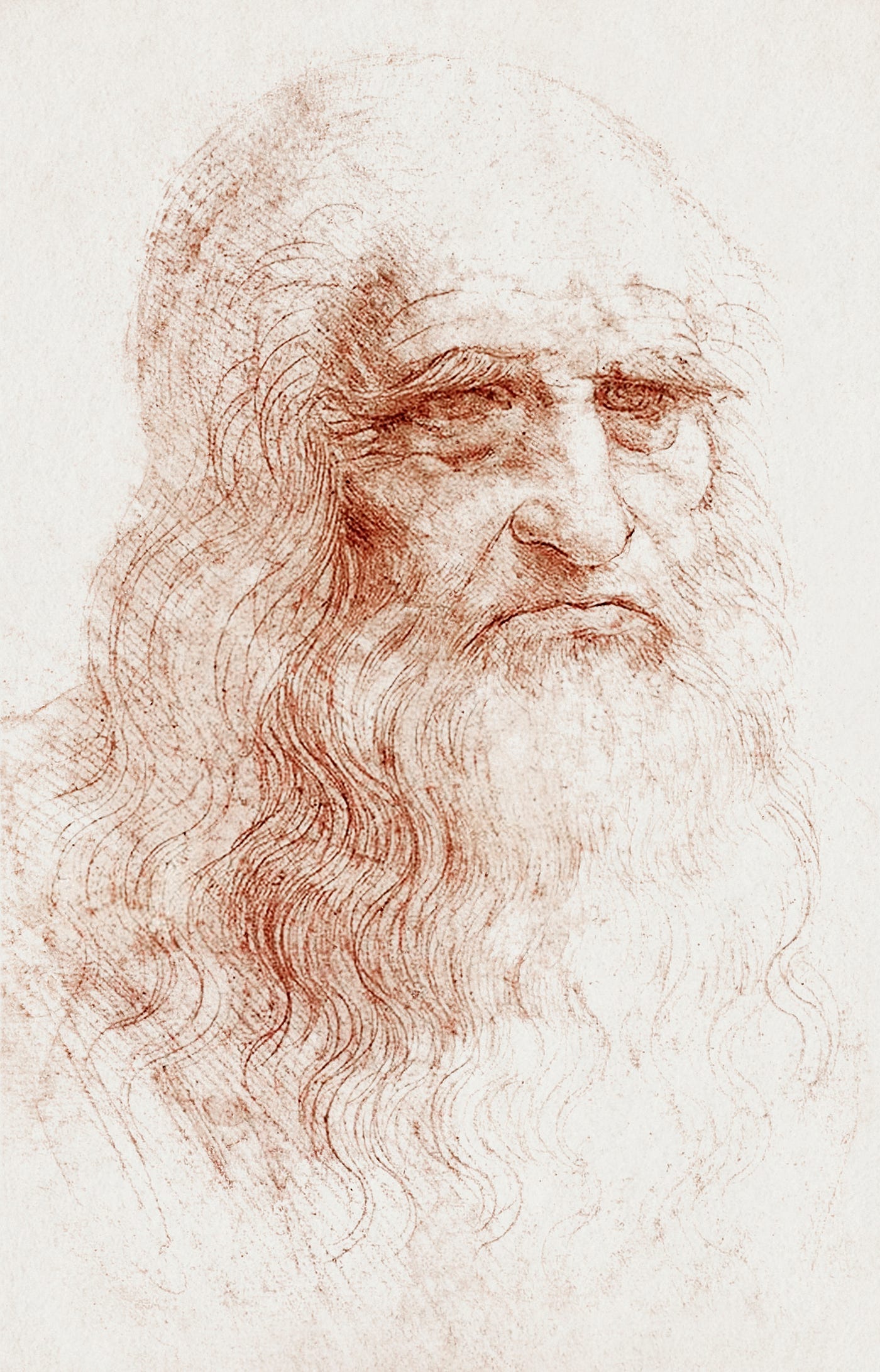
In the grand tapestry of human endeavor, few threads shine as brightly as those woven by the minds of truly iconic scientists. These are the individuals whose relentless curiosity, unparalleled intellect, and sheer determination have not only pushed the boundaries of human knowledge but have fundamentally reshaped our understanding of the cosmos, life, and the very fabric of existence. Their stories are testaments to the transformative power of human inquiry, daring to ask profound questions and challenging established norms to illuminate new truths.
From the mysteries of the subatomic world to the vast expanse of the universe, and from the intricate mechanisms of life to the revolutionary potential of pure thought, these visionaries have left an indelible mark on science and society. Their discoveries, often born from struggle and perseverance, continue to inspire generations, proving that the pursuit of knowledge is a journey without end. This article embarks on an extraordinary journey through the lives and legacies of some of the greatest scientists of all time, celebrating their extraordinary impact on fields including physics, chemistry, biology, astronomy, and numerous others.
Join us as we explore the foundational contributions of these exceptional individuals, whose work stands as a testament to the transformative power of human curiosity. We begin with a look at five giants whose groundbreaking insights continue to echo through the corridors of scientific thought, forever altering the way we perceive the world around us. Their contributions have propelled humanity forward in ways that were once unimaginable, lighting paths for future generations of discoverers.
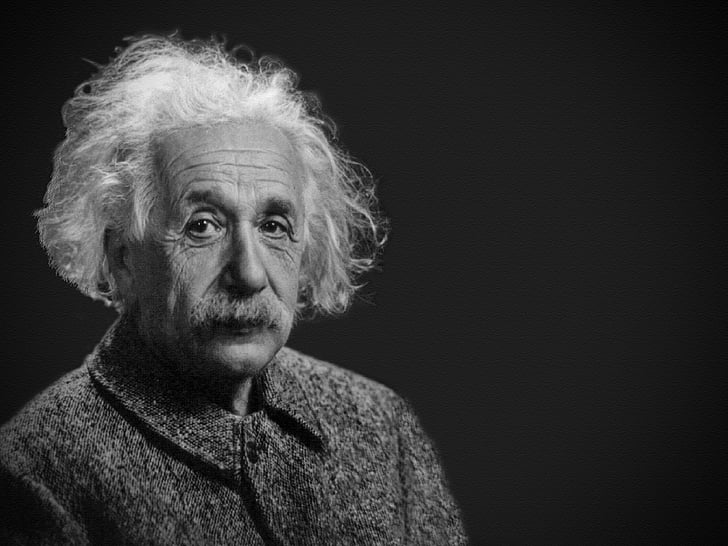
1. **Albert Einstein: Famous Scientist for the Theory of Relativity**Albert Einstein, a name synonymous with genius, was more than just a scientific mind; he was a figure of enduring popularity and profound intrigue. His remarkable contributions to science, most notably the famous equation E = mc2 and the comprehensive theory of relativity, challenged conventional notions about space, time, and matter, fundamentally reshaping our understanding of the universe. His distinctive look and witty personality further cemented his place in the public consciousness, making him a household name unlike any physicist before or since.
Born in Ulm, Germany, in 1879, Einstein displayed a precocious intellect from a young age, even writing a paper on magnetic fields as a teenager. Dispelling popular lore, he never actually failed math. His professional journey began in 1905 as a clerk in the Swiss Patent Office, a period of immense productivity where he published his four groundbreaking papers. These included his seminal work on the relationship between matter and energy, captured in his iconic equation, E = mc2.
That year, 1905, marked a watershed moment in scientific history, with Einstein publishing his most important papers on diverse topics such as Brownian motion, the photoelectric effect, and special relativity. His work on special relativity introduced the revolutionary idea that space and time are not independent but interwoven, a concept that laid the crucial foundation for modern astronomy. He further expanded these ideas in 1916 with the development of general relativity, proposing that mass and energy distort the very fabric of space and time, profoundly influencing our understanding of gravity.
While Einstein received the Nobel Prize in Physics in 1921, it was not for his groundbreaking work on general relativity, but rather for his discovery of the photoelectric effect, demonstrating the particle-like nature of light. His contributions were so immense that his popularity transcended the scientific community; a film about his general theory of relativity in 1930 at the American Museum of Natural History led to what the Chicago Tribune called “the first science riot in history,” with 4,500 people attempting to attend.
Einstein, who passed away from heart failure in 1955, left behind an immeasurable legacy that extended far beyond his scientific discoveries. He was also a prominent public intellectual, a vocal civil rights advocate, and a staunch pacifist. His theory of general relativity remains one of his most celebrated achievements, predicting phenomena like black holes and gravitational waves, which physicists have recently measured from the collision of two black holes over a billion light-years away. It also underpins gravitational lensing, allowing astronomers to study distant cosmic objects with unprecedented clarity. As James Overduin, a theoretical physicist, remarked, “Einstein remains the last, and perhaps only, physicist ever to become a household name.” His imaginative thinking, a quality he deeply valued, led to his greatest insights, as he once stated, “Knowledge is limited. Imagination encircles the world.”
Read more about: Exploring the Minds that Shaped Our World: A Journey Through the Legacies of Iconic Scientists
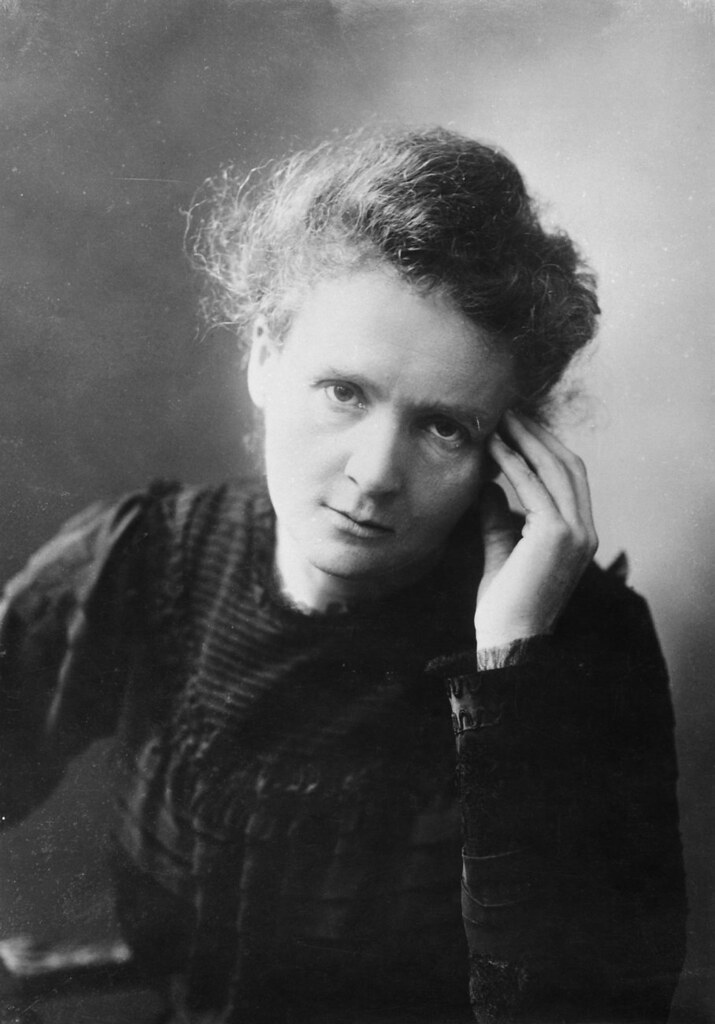
2. **Marie Curie: Famous for Pioneering Work in Radioactivity**Marie Curie’s extraordinary ascent to scientific acclaim is a testament to unwavering determination and an insatiable thirst for knowledge. Her journey was set against a backdrop of poverty and political turmoil in her native Poland, yet her relentless passion for learning and her groundbreaking contributions to physics and chemistry left an everlasting and transformative impact on the world of science and medicine.
Born Maria Salomea Sklodowska in 1867 in Warsaw, Poland, Marie faced immense challenges from her early life. Both her gender and her family’s financial struggles, exacerbated by their fervent patriotism and sacrifices for Poland’s independence, placed significant hurdles in her path. Despite these adversities, her parents, who were themselves educators, instilled in her a profound love for learning and a deep appreciation for Polish culture.
Societal restrictions and a lack of financial resources initially denied Marie and her sisters opportunities for higher education. In a courageous act of defiance against Russian rule, which forbade Polish education, Marie and her sister Bronislawa joined the clandestine organization known as the Flying University. This secret education system allowed Marie to continue her intellectual development, nurturing the brilliant mind that would soon revolutionize science.
Marie Curie’s monumental path to scientific greatness truly began when she arrived in Paris in 1891 to pursue higher education. Inspired by the work of French physicist Henri Becquerel, who had discovered the emissions of uranium, Marie chose to explore uranium’s mysterious rays for her Ph.D. thesis. Her meticulous research led her to the groundbreaking discovery of radioactivity, a revelation that matter itself could undergo atomic-level transformations, forever changing our understanding of atomic structure.
Collaborating closely with her husband, Pierre Curie, Marie embarked on a meticulous examination of uranium-rich minerals. This arduous work culminated in the discovery of two entirely new elements: polonium, named after her homeland, and radium. Their findings were published in 1898, and within an astonishing five months, they announced the discovery of radium. Their collective efforts were recognized in 1903 when Marie Curie, Pierre Curie, and Henri Becquerel were jointly awarded the Nobel Prize in Physics for their pioneering work in radioactivity, making Marie the first woman ever to receive a Nobel Prize and marking a truly historic achievement.
Tragedy struck in 1906 with the sudden death of Pierre Curie in a carriage accident. Despite her profound grief, Marie Curie displayed extraordinary resilience, persevering with her research and taking over Pierre’s professorship at the University of Paris. Her continued dedication and further isolation of pure radium were recognized again in 1911 when she earned her second Nobel Prize, this time in Chemistry, for her remarkable contributions to the fields of polonium and radium. Marie Curie remains the only person to receive Nobel Prizes in two different scientific fields, a testament to her unparalleled achievements.
Her legacy extended well beyond her Nobel Prizes, encompassing significant contributions to the fields of radiology and nuclear physics. She founded the Radium Institute in Paris, which itself went on to produce its own Nobel laureates. During World War I, she led France’s first military radiology center, pioneering the use of mobile X-ray units, becoming the first female medical physicist. Marie Curie’s extraordinary life came to an end in 1934 from a type of anemia, likely a direct consequence of her extreme exposure to radiation throughout her groundbreaking career. Her original notes and papers are still so radioactive that they are kept in lead-lined boxes, requiring protective gear to view them, a poignant reminder of her ultimate sacrifice in the pursuit of knowledge.
Read more about: Exploring the Minds that Shaped Our World: A Journey Through the Legacies of Iconic Scientists
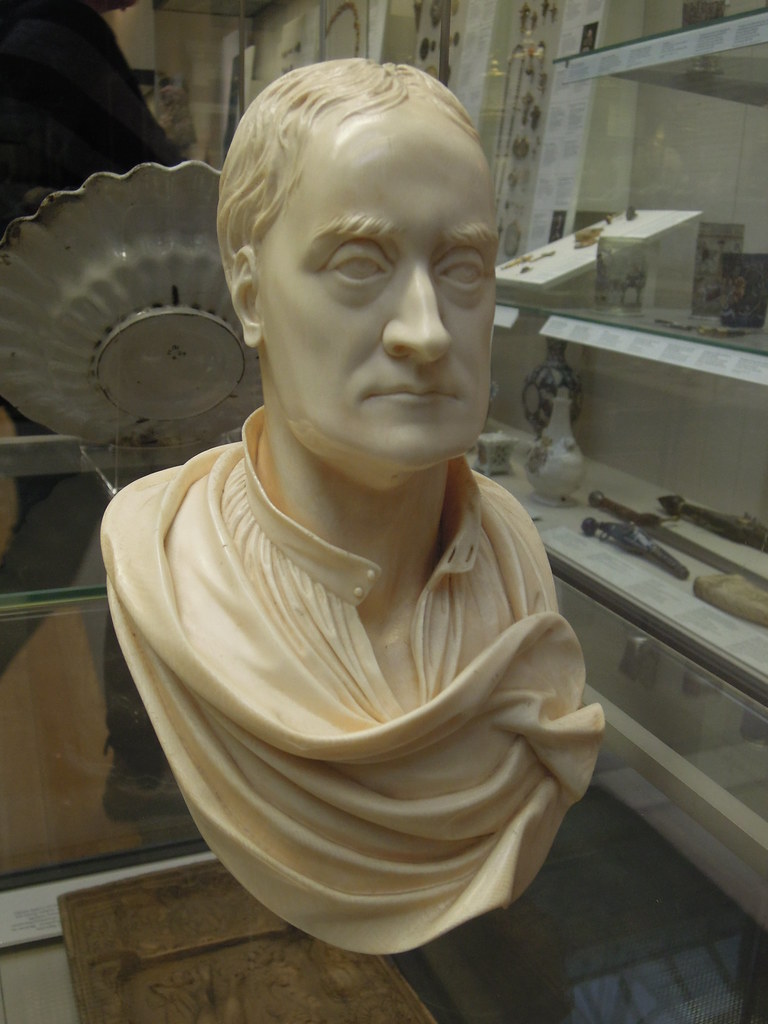
3. **Isaac Newton: Famous for Newton’s Laws of Motion and Gravitation**Isaac Newton, an English mathematician, physicist, and astronomer, stands as one of the most influential scientists in all of history. His groundbreaking contributions across various fields of science and mathematics were pivotal, establishing him as a key figure in the scientific revolution of the 17th century and fundamentally altering our perception of the physical world.
Born on Christmas Day in 1642, Newton’s mere survival as a sickly infant was an achievement in itself. Fast forward 23 years, and with Cambridge University temporarily closed due to the plague, Newton embarked on a period of profound intellectual ferment, laying the groundwork for many of the discoveries that would eventually bear his name. During this intense period, he invented calculus, an entirely new form of mathematics that would prove indispensable to his scientific journey and future scientific endeavors.
Despite the magnitude of his discoveries, Newton was an intensely introverted individual who famously withheld his findings for decades. It was only through the persistent efforts of his friend, Edmund Halley, renowned for discovering comets, that Newton finally agreed to publish his work. Halley’s initial interest was piqued by a bet concerning planetary orbits, and he was utterly astounded when Newton, having already solved the problem years prior, presented him with the complete solution.
The culmination of Newton’s prodigious work was the monumental “Philosophiæ Naturalis Principia Mathematica,” universally known as the Principia, published in 1687. This seminal text did far more than merely describe the motion of planets and projectiles; it unveiled the unifying force of gravity, demonstrating definitively that this invisible power governed both heavenly bodies and earthly phenomena. Newton’s laws, articulated within the Principia, became the essential key to unlocking many of the universe’s most profound mysteries, establishing a framework for understanding mechanics that persisted for centuries.
Newton’s dedication to academia was unwavering, though his methods were unconventional. He was known to rarely leave his room except to deliver lectures, often addressing empty halls. His contributions extended beyond the famous laws of motion and gravitation, encompassing groundbreaking work in optics, color theory, the development of reflecting telescopes that bear his name, and fundamental advancements in mathematics and the study of heat. His intellectual breadth was truly astonishing.
In 1692, Newton experienced a rare period of failure and suffered a prolonged nervous breakdown, a condition possibly exacerbated by mercury poisoning from his secretive alchemical experiments. Although he largely ceased producing new scientific work, his immense influence in the field persisted. Newton spent his remaining three decades in public service, modernizing England’s economy and pursuing criminals with unexpected vigor.
In 1696, he received a royal appointment as the Warden of the Mint in London. Far from being a mere cushy job, Newton immersed himself completely in the role. He meticulously oversaw the recoinage of English currency, provided crucial economic advice, established the gold standard, and introduced ridged coins to prevent the tampering of precious metals. His dedication even extended to infiltrating London’s criminal networks to vigorously pursue counterfeiters, witnessing their executions with a stern sense of justice.
Newton’s reputation among his peers was often marred by his notoriously unpleasant demeanor. He cultivated few close friends, never married, and was famously described as “insidious, ambitious, and excessively covetous of praise, and impatient of contradiction” by Astronomer Royal John Flamsteed. Newton was known to hold grudges for extended periods and engaged in famous, often acrimonious feuds, notably with German scientist Gottfried Leibniz over the invention of calculus and with English scientist Robert Hooke over optics and gravitation. Despite his complex personality, Isaac Newton’s legacy endures as one of the world’s greatest scientists. His contributions to physics, mathematics, and various scientific disciplines fundamentally shifted human understanding, with his laws of motion and gravitation remaining foundational principles. His work in optics and mathematics laid indispensable groundwork for countless future scientific advancements. It is indeed fitting that the unit of force is named after the stubborn, persistent, and amazing Newton, truly a force of nature himself.
Read more about: Exploring the Minds that Shaped Our World: A Journey Through the Legacies of Iconic Scientists
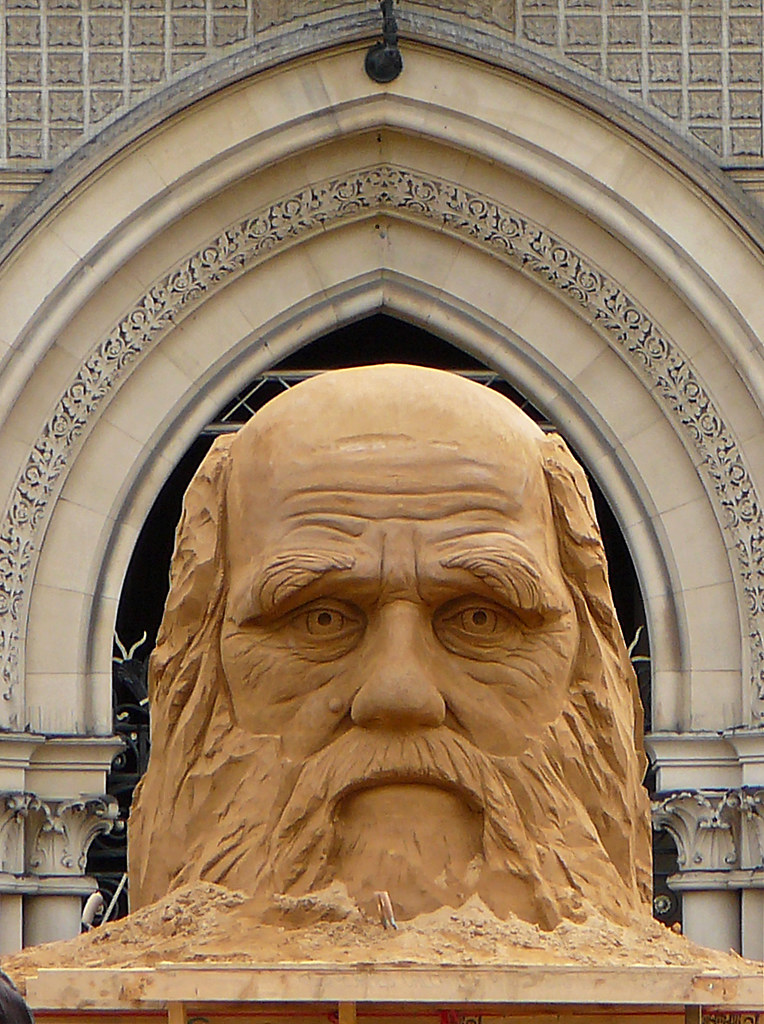
4. **Charles Darwin: Famous for Theory of Evolution Through Natural Selection**Charles Darwin, a name that has become synonymous with revolutionary scientific thought, embarked on an unlikely journey that forever changed our understanding of life on Earth. His profound inspiration stemmed from a deep curiosity about beetles and geology, setting him on a transformative path that would culminate in one of the most significant theories in history. His theory of evolution through natural selection challenged prevailing beliefs rooted in creationism and left an enduring legacy that continues to shape the field of biology and our perception of humanity’s place in the natural world.
This unlikely revolutionary began his scientific journey with rather unconventional interests for a future titan of biology, spending his youth collecting beetles and avidly studying geology. As a young man, he occasionally skipped classes at the University of Edinburgh Medical School, preferring to explore the natural wonders of the countryside. His path to becoming the father of evolutionary biology took an unexpected, pivotal turn in 1831 when he received an invitation to join a world-spanning journey aboard the HMS Beagle, a voyage that would irrevocably alter his destiny and the course of science.
During his extraordinary five-year voyage aboard the HMS Beagle, Darwin meticulously observed and documented an astonishing array of geological formations, diverse habitats, and the varied flora and fauna across the Southern Hemisphere. His careful, systematic observations led to a paradigm-shifting realization that directly challenged the prevailing Victorian-era theories of animal origins, which were largely rooted in creationism. The sheer diversity and subtle adaptations he witnessed began to form a new hypothesis in his mind.
Darwin noticed subtle, yet significant, variations within the same species based on their specific environments. A prime example of this was the unique beak shapes of Galapagos finches, each perfectly adapted to their particular food sources. These meticulous observations gave rise to his groundbreaking concept of natural selection, a radical idea suggesting that species could change and evolve over vast spans of time due to environmental pressures, rather than being fixed entities created by divine intervention. It was a theory that would shake the foundations of established thought.
Upon his return, Darwin was initially hesitant to publish his revolutionary evolutionary ideas, keenly aware of the controversy they would ignite. Instead, he prudently focused on diligently studying his voyage samples and producing significant works on geology, coral reefs, and barnacles, laying further scientific groundwork. He married his first cousin, Emma Wedgwood, and together they had ten children, with Darwin actively engaging as a loving and attentive father—a practice that was notably uncommon among eminent scientists of his era, highlighting his unique character.
Darwin’s unique interests, which included taxidermy and sampling unusual foods, coupled with his lifelong struggle with ill health, did not deter him from his singular evolutionary pursuits. Over two decades, he meticulously gathered overwhelming evidence, compiling a vast body of data in support of evolution. All of his observations and musings eventually coalesced into the literary and scientific tour de force that was “On the Origin of Species,” published in 1859 when Darwin was 50 years old. The 500-page book sold out immediately, demonstrating its profound impact, and Darwin would go on to produce six editions, each time adding to and refining his powerful arguments.
In clear, non-technical language, the book laid out a simple yet profound argument for how the wide array of Earth’s species came to be. It was fundamentally based on two core ideas: that species possess the capacity to change gradually over time, and that all species inevitably face difficulties brought on by their surroundings. From these basic, observable facts, it logically followed that those species best adapted to their environments would survive and reproduce, while those that fell short would ultimately perish. This concept of “survival of the fittest” transformed biological thought.
Despite facing fierce criticism from proponents of creationism and the powerful religious establishment of his time, Darwin’s theory of natural selection and evolution eventually gained widespread acceptance in the 1930s. His monumental work revolutionized scientific thought and remarkably remains largely intact to this day, a testament to its robust foundation and explanatory power. His theory, meticulously documented and logically sound, has withstood the rigorous test of time and relentless scrutiny. Jerry Coyne, a professor emeritus, emphasizes the profound impact of Darwin’s theory, stating that it “changed people’s views in so short a time” and that “there’s nothing you can really say to go after the important aspects of Darwin’s theory.”
Read more about: Exploring the Minds that Shaped Our World: A Journey Through the Legacies of Iconic Scientists

5. **Nikola Tesla: Famous for Electricity, Magnetism, and Wireless Power Transmission Concepts**Nikola Tesla, a name that evokes both brilliant invention and enigmatic mystique, exhibited a remarkable aptitude for science and innovation from a very early age. His groundbreaking work in electricity, magnetism, and revolutionary wireless power transmission concepts firmly established him as an eccentric but undeniably brilliant pioneer in the nascent field of electrical engineering. One vivid depiction of his enduring legacy is a bronze statue on the Canadian side of Niagara Falls, where a statue of Tesla grips his hat and points his cane toward the majestic falls, beckoning bystanders to turn their gaze to the future. He stands atop an induction motor, the very type of engine that powered the first hydroelectric power plant—a powerful symbol of his vision.
Nikola Tesla, a Serbian-American engineer, was born in 1856 in what is now Croatia. His pioneering work in the field of electrical engineering laid the fundamental groundwork for our modern electrified world. Tesla’s groundbreaking designs played a crucial, transformative role in advancing alternating current (AC) technology during the tumultuous early days of the electric age. His innovative systems enabled the efficient transmission of electric power over vast distances, ultimately lighting up countless American homes and industries.
One of Tesla’s most significant and iconic contributions was the development of the Tesla coil, a high-voltage, resonant transformer circuit that had a profound and lasting impact on electrical engineering. Beyond this, his innovative techniques allowed for the wireless transmission of power, a concept that remains a frontier of exploration even today, particularly in the rapidly evolving field of wireless charging for devices like cell phones. His foresight in this area was truly remarkable, pushing the boundaries of what was thought possible.
Tesla’s visionary mind frequently led him to propose audacious and often fantastical ideas. Among these was a grand plan involving a global system of towers designed to harness energy from the environment and transmit both signals and electricity wirelessly around the world. While these ideas were undeniably intriguing and captivating, they were ultimately deemed impractical with the technology of the time and remained unrealized. Adding to his mystique, Tesla also famously claimed to have invented a “death ray,” a sensational assertion that only further cemented his eccentric public image.
Tesla’s eccentric genius and prolific output of inventions earned him widespread recognition during his lifetime. He held numerous patents that profoundly shaped the field of electrical engineering. It is important to note that while he did not invent alternating current (AC) itself, he played an absolutely pivotal role in its development, refinement, and vigorous promotion, famously engaging in the “War of the Currents” against Thomas Edison’s direct current (DC) systems. His ceaseless work and a steady stream of inventions made him a household name, a rare feat for a scientist in his era.
In recent years, Tesla’s legacy has taken on a life of its own, sometimes overshadowing his actual scientific and engineering achievements in the popular imagination. He has evolved into a powerful symbol of innovation, intellectual rebellion, and inspiring eccentricity, even influencing cultural phenomena like San Diego Comic-Con, where attendees dress as him. Perhaps most notably, the world’s most famous electric car company proudly bears his name, a testament to his ongoing and profound influence on the electrification of transportation and the broader technological landscape. While Tesla’s mystique sometimes ventured into the realm of self-promotion and fantastical claims, his genuine and fundamental contributions to electrical engineering are undeniable. He may not have caused earthquakes with his inventions or single-handedly discovered AC, but his visionary work and undeniable impact on the electrification of the world continue to illuminate our lives in countless ways, a true beacon of ingenuity.” , “_words_section1”: “1994
Read more about: Exploring the Minds that Shaped Our World: A Journey Through the Legacies of Iconic Scientists
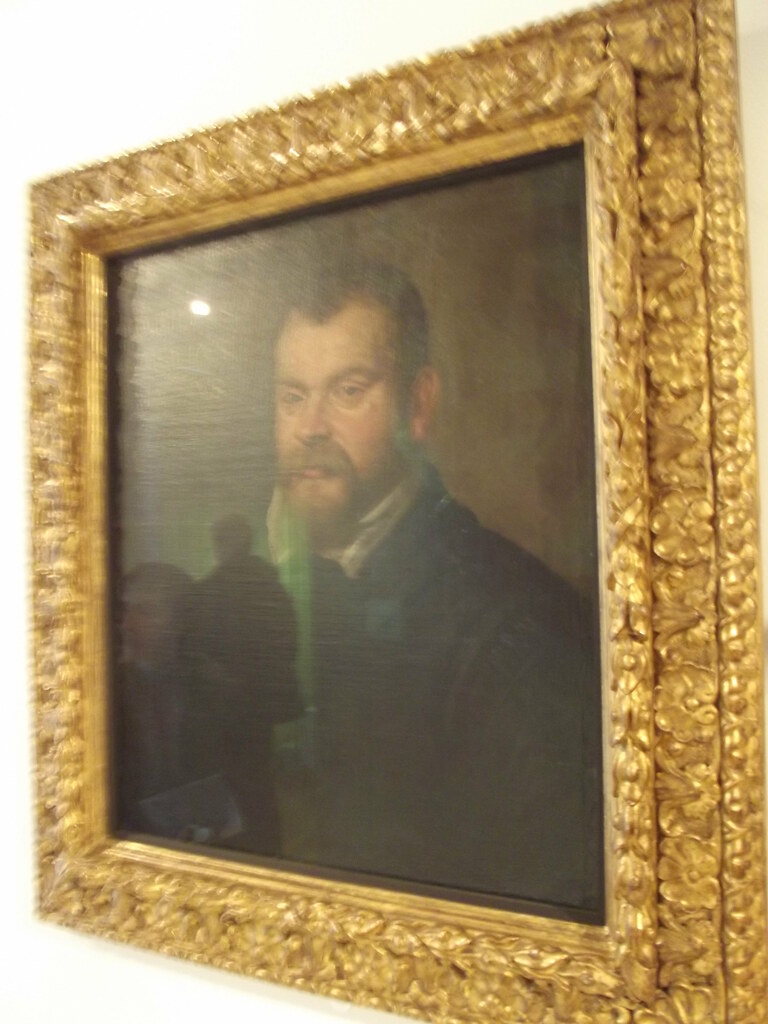
6. **Galileo Galilei: Famous for his Astronomical Observations and Our Understanding of Motion**Galileo Galilei, an Italian mathematician of profound insight, heralded a new era in modern astronomy with a simple yet revolutionary act: turning a telescope towards the moon. At the age of 45, around December 1609, this pioneering gaze through the nascent instrument unlocked a cosmos far richer and more dynamic than previously imagined, setting the stage for paradigm shifts in human thought.
His telescopic observations were nothing short of breathtaking and unveiled a universe bustling with activity. Galileo discovered four large moons faithfully orbiting Jupiter, a revelation that directly challenged the long-held geocentric view that everything in the heavens revolved around Earth. Further, he observed the Milky Way’s ethereal glow to be an immense collection of countless distant stars, identified transient sunspots on the solar surface, and meticulously tracked the phases of Venus. This last observation provided irrefutable evidence that Venus orbited the sun, firmly supporting the heliocentric model first proposed by the Polish astronomer Nicolaus Copernicus.
While Galileo did not invent the telescope, and others had used it for celestial observations, his systematic application and rigorous documentation undeniably marked a watershed moment in the history of science. His groundbreaking findings were crucial in validating Copernicus’s sun-centered solar system model, initiating a profound shift in cosmic perspective. Beyond his astronomical revelations, Galileo also made seminal contributions to the understanding of motion, challenging Aristotelian physics. He famously demonstrated that objects dropped simultaneously would strike the ground at the same time, irrespective of their size, illustrating that gravity’s effect is independent of an object’s mass. His formulation of the law of inertia was equally pivotal, providing an essential framework for explaining the Earth’s rotation.
However, Galileo’s scientific pursuits brought him into direct conflict with the powerful Roman Catholic Church. In 1616, the Inquisition commanded him to cease promoting heliocentrism, as it directly contradicted the church’s entrenched geocentric doctrine, which was rooted in the outdated cosmology of Aristotle. The tension escalated in 1633 when Galileo published a work that overtly compared and discredited the Ptolemaic system in favor of the Copernican model. As a consequence of his unwavering commitment to empirical truth, he was placed under house arrest, where he remained until his death in 1642.
Despite the formidable challenges he endured at the hands of religious authorities, Galileo’s legacy remains monumental and unyielding. His meticulous observations and pioneering work on celestial bodies and the fundamental principles of motion laid an indispensable foundation for modern astronomy and physics. His law of inertia, in particular, profoundly influenced future scientific titans like Sir Isaac Newton, who built upon Galileo’s insights to formulate a comprehensive set of laws of motion that continue to guide spacecraft navigation across the solar system even today. Fittingly, NASA’s Galileo mission to Jupiter, launched centuries later, stands as a testament to the enduring relevance and profound impact of his groundbreaking contributions to the boundless realm of space exploration.
Read more about: Exploring the Minds that Shaped Our World: A Journey Through the Legacies of Iconic Scientists
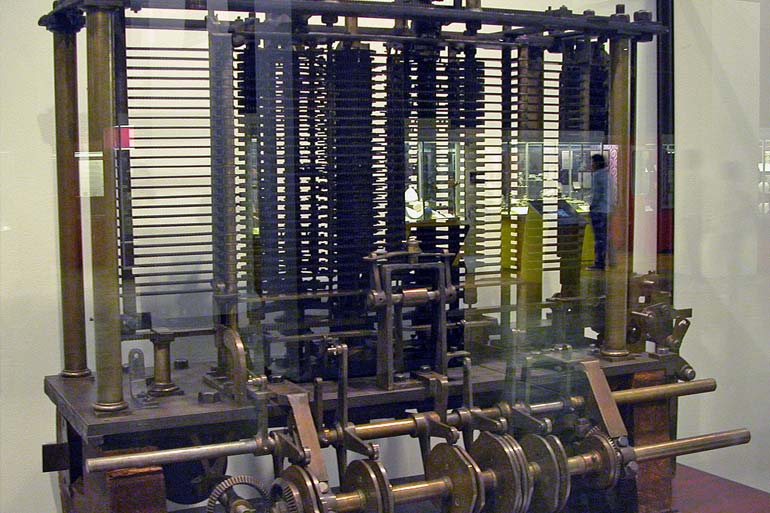
7. **Ada Lovelace: Famous For Being the World’s First Computer Programmer**Ada Lovelace, born into a world of societal constraints, chose a path of intellectual rebellion that would forever transform the landscape of computer science. Far ahead of her time, she is universally recognized as the world’s first computer programmer, a visionary who not only grasped the mechanics of early computing machines but also foresaw their potential far beyond mere calculation. Her enduring legacy continues to inspire generations, rightfully earning her the moniker of the ‘Enchantress of Numbers.’
Born Ada Byron, the only legitimate child of the famed poet Lord Byron, her journey into the esoteric realm of mathematics and computing commenced with remarkable precocity in the early 1830s. At a mere 17 years of age, she embarked on a pivotal intellectual collaboration with the illustrious British mathematician, inventor, and engineer, Charles Babbage. Babbage, a figure himself hailed as the ‘father of the computer,’ had conceptualized ambitious designs for an intricate machine known as the Difference Engine, an advanced mechanical calculator that represented a monumental leap in automated computation.
Their paths converged significantly at a social gathering in the 1830s, where Babbage presented an incomplete prototype of his revolutionary Difference Engine. Among the distinguished attendees, it was the young Ada Lovelace who, despite her youth, exhibited an extraordinary intuitive grasp of the machine’s complex inner workings. This seminal encounter sparked the beginning of a profound working relationship and a close intellectual friendship between Lovelace and Babbage, one that would endure steadfastly until her tragically early death in 1852 at the age of 36. Inspired by Babbage’s innovations, Lovelace’s keen intellect immediately recognized the immense and untapped potential embedded within his latest, even more ambitious, concept: the Analytical Engine.
The Analytical Engine was conceived as far more than a sophisticated calculator; it was an intricate, general-purpose machine. Its sophisticated mechanisms, coupled with the ingenious ability for users to input commands via punch cards, endowed it with the unprecedented capacity to perform a wide spectrum of mathematical tasks. Lovelace, demonstrating unparalleled foresight, advanced Babbage’s vision by crafting a detailed set of instructions designed to solve a complex mathematical problem, an achievement many historians have since acknowledged as the creation of the world’s first true computer program. In this groundbreaking intellectual endeavor, Lovelace did not merely describe a machine; she laid the foundational principles for what would become modern computer programming, definitively cementing her legacy as one of humanity’s greatest scientific minds.
Ada Lovelace’s contributions to what she eloquently termed ‘poetical science’ are celebrated today as pioneering achievements in the nascent fields of computer programming and advanced mathematics. Despite navigating a tumultuous personal life, marked by the social complexities of the era, her sheer intellectual brilliance and extraordinary foresight into the transformative potential of computing machines unequivocally distinguished her. Charles Babbage himself, her esteemed collaborator, captured her singular genius by describing Lovelace as an ‘enchantress’ who wielded a remarkable influence over the abstract realm of science, a force he deemed equivalent to the most brilliant male intellects of her time. Her vision continues to resonate, underpinning the digital world we inhabit today.
Read more about: Exploring the Minds that Shaped Our World: A Journey Through the Legacies of Iconic Scientists

8. **Pythagoras: Famous for the Pythagorean Theorem**Pythagoras, a name that echoes through the annals of history, left an indelible mark on the world of mathematics that continues to shape the field in profound ways even today. While his most famous contribution, the Pythagorean theorem—which articulates the fundamental relationship between the sides of a right triangle—is widely recognized, his broader philosophical and mathematical contributions, alongside his unwavering conviction in the inherent order of numbers, laid the very bedrock for geometry and mathematical thought for centuries to come.
This enigmatic Greek philosopher and mathematician flourished in the sixth century B.C., originating from the island of Samos before establishing his influential school in Croton, a Greek colony in southern Italy. Though his life is shrouded in a mixture of legend and historical fact, his ideas profoundly influenced Western thought. While the exact origins of the Pythagorean theorem as a mathematical concept are subject to historical debate, with evidence of similar relationships existing in earlier Babylonian and Indian mathematics, Pythagoras is unequivocally credited with its formal proof and widespread popularization within Greek intellectual circles.
Pythagoras played an immensely significant role in the systematic development and articulation of this fundamental geometric principle. His emphasis extended far beyond mere calculation; he championed the importance of abstract mathematical concepts and the elegance of logical proof. This philosophical stance laid a crucial intellectual foundation for modern geometry, transforming it from a collection of empirical rules into a rigorous, deductive science. His belief that ‘all is number’ permeated his teachings, suggesting that numerical relationships provided the underlying harmony and structure of the entire universe.
His lasting legacy, particularly through the Pythagorean theorem, has permeated science and education, proving indispensable across countless disciplines from architecture to engineering. Pythagoras’s profound emphasis on the intrinsic importance of mathematical relationships and the irrefutable certainty derived from mathematical proofs continues to profoundly influence the way we approach and understand the intricate order of the world around us. His insights underscore the power of abstract thought to unlock concrete truths about reality, a testament to his enduring genius.
Read more about: Exploring the Minds that Shaped Our World: A Journey Through the Legacies of Iconic Scientists
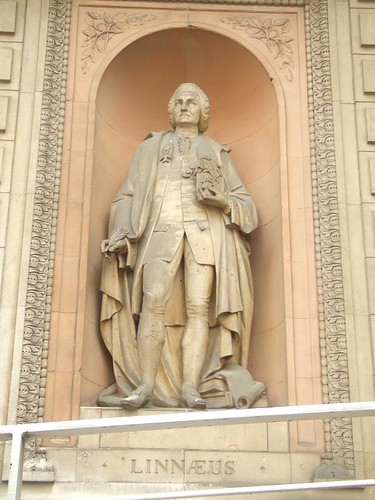
9. **Carl Linnaeus: Famous for His System of Naming Living Organisms**Carl Linnaeus, the visionary Swedish naturalist, embarked on a monumental mission to bring clarity and precision to what was, before his interventions, a chaotic and often contradictory landscape of naming living organisms. His innovative and elegant system of binomial nomenclature emerged as a transformative force, not only simplifying the process of scientific communication globally but also laying the indispensable foundation for modern taxonomy. His enduring legacy in the field of biology is truly unparalleled.
His groundbreaking work, akin to a functional, user-friendly innovation that would revolutionize a complex domain, began in his native Sweden. Before Linnaeus, the naming of plants and animals was often lengthy, descriptive, and inconsistent, leading to immense confusion among naturalists attempting to identify and communicate about species across different regions and languages. This lack of a standardized approach hindered the systematic study of biodiversity and the sharing of scientific knowledge, creating a genuine ‘chaos’ that begged for order.
Linnaeus’s genius lay in his creation of a hierarchical classification system, most famously known for its standardized two-part naming convention—binomial nomenclature. This system assigns each species a unique scientific name consisting of two Latinized parts: the genus name, followed by the species name. For instance, *Homo sapiens* clearly identifies our own species, eliminating ambiguity. This streamlined approach provided a universal language for biologists, enabling clear and consistent identification and communication, transcending linguistic barriers and bringing unprecedented ‘order’ to the biological world.
Through his seminal works such as *Systema Naturae* (first published in 1735) and *Species Plantarum* (1753), Linnaeus meticulously cataloged and classified thousands of species, establishing a framework that remains largely intact and utilized by scientists worldwide. His system not only simplified identification but also implied evolutionary relationships, a concept further developed by later scientists like Charles Darwin. The precision and universality introduced by Linnaeus’s binomial nomenclature profoundly advanced the scientific study of life, making him the undisputed ‘father of modern taxonomy.’ His enduring influence is a testament to the power of systematic organization in unlocking the mysteries of the natural world.
Read more about: Exploring the Minds that Shaped Our World: A Journey Through the Legacies of Iconic Scientists

10. **Rosalind Franklin: Famous for X-ray Crystallography and Groundbreaking Research on the Structure of DNA**
Rosalind Franklin, an extraordinary chemist and X-ray crystallographer, stands as a towering figure whose meticulous and groundbreaking research fundamentally reshaped our understanding of life itself. Her profound contributions, particularly in the application of X-ray crystallography, were absolutely pivotal in unraveling the intricate structure of DNA, a discovery that would unlock unprecedented insights into heredity and the very blueprints of biological existence.
Born in London in 1920, Franklin possessed a brilliant scientific mind and an unwavering commitment to rigorous experimental work. She applied her expertise in X-ray diffraction techniques to study the molecular structures of complex biological materials, including coal, viruses, and crucially, DNA. X-ray crystallography, a powerful analytical method, involves beaming X-rays through crystallized molecules and then capturing the diffraction patterns that emerge. These patterns, though complex, hold the key to discerning the three-dimensional arrangement of atoms within the molecule.
Franklin’s work on DNA at King’s College London in the early 1950s produced remarkably clear and highly resolved X-ray diffraction images, most famously ‘Photo 51.’ This image, along with her detailed analytical reports, provided compelling evidence that DNA had a helical structure, with a specific width and the nitrogenous bases arranged on the interior of the helix. Her data was instrumental in providing the critical empirical evidence necessary for deciphering the definitive double helix model of DNA, a revelation that galvanized the nascent field of molecular biology.
While the full recognition for her vital role was regrettably delayed and often overlooked in the immediate aftermath of the DNA structure announcement, Rosalind Franklin’s scientific rigor and profound insights are now widely celebrated. Her pioneering use of X-ray crystallography not only unveiled the secrets of DNA but also established the technique as an indispensable tool for understanding a myriad of biological macromolecules. Her meticulous approach to scientific inquiry and her groundbreaking discoveries continue to serve as an inspiration, reminding us of the often unsung heroes whose dedication to foundational research ultimately propels humanity’s understanding forward.
From unraveling the mysteries of the cosmos to unearthing the origins of humanity, and from designing the very first computer programs to deciphering the genetic code, these ten iconic scientists have not only expanded the boundaries of human knowledge but have also profoundly altered the way we live, work, and perceive the world around us. Their relentless pursuit of knowledge, often against formidable odds and with singular determination, has propelled humanity forward in ways that were once unimaginable. Their contributions stand as an enduring testament to the transformative power of human curiosity and the indelible impact of those who dared to ask questions, challenge the status quo, and ultimately, change the world in ways that resonate for centuries. These are the giants upon whose shoulders all future discovery rests, marking a profound age of scientific advancement that continues to illuminate our path forward.

